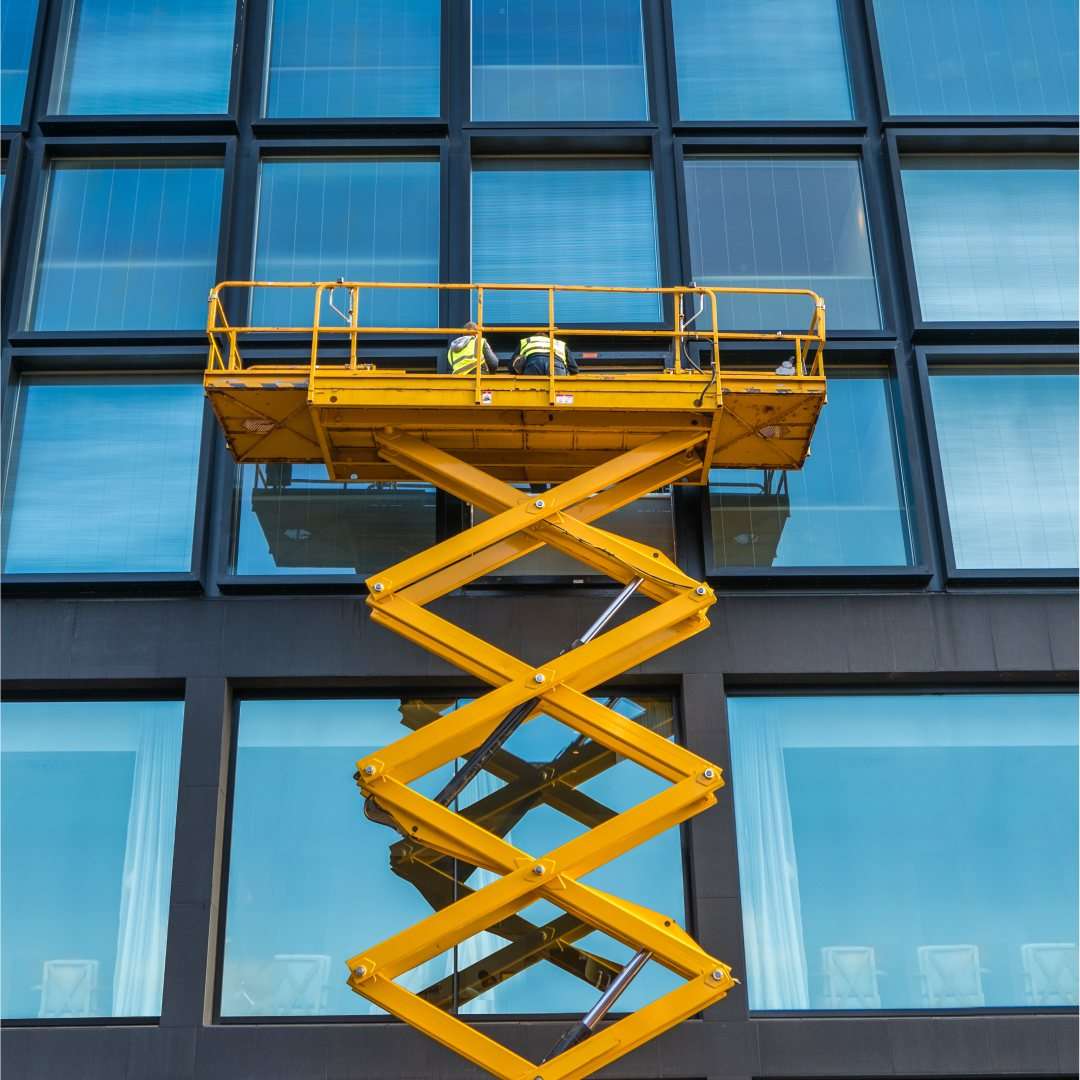Hydraulic lifts are one of the most commonly used types of lifts in modern industries. They have
become popular because of their high performance, flexibility and reliability. Hydraulic pumps have many different applications in all industries including construction, automotive, manufacturing and warehousing. Hydraulic lifts are a versatile and efficient tool that has become an indispensable part of various industries
In this article we will go into the details of what hydraulic lifts are, features & their uses.
WHAT IS A HYDRAULIC LIFT?
A hydraulic lift is a mechanical system that uses hydraulic fluid to raise, lower or move heavy objects. It includes a pump that applies pressure to the fluid, a cylinder that holds the fluid, and a piston that moves the fluid. The hydraulic fluid used is generally oil and the system operates under high pressure.
Hydraulic lifting systems are simple in design and can be easily incorporated into a variety of applications. The hydraulic system can be operated manually or with an electric motor.
FEATURES OF HYDRAULIC LIFT
Hydraulic lifts come with a range of features that make them stand out from other types of lifts. Some of the common features of hydraulic lifts are listed below
1.HIGH LOAD CAPACITY
Hydraulic lifts are designed to handle heavy loads, making them ideal for heavy-duty applications
2.SMOOTH OPERATION
Hydraulic lifts offer a smooth and controlled lifting and lowering process increasing the safety of the operator and load being lifted.
3.VERSATILITY
Hydraulic lifts can be adjusted to meet specific requirements, making them suitable for many applications
4.DURABILITY
Hydraulic pumps are made of high-quality materials, making them durable and long-lasting
5.LOW MAINTENANCE
Hydraulic lifts require little maintenance due to their simple design and small moving parts.
USES OF HYDRAULIC LIFT
Let’s look at some of the top 5 uses of hydraulic lifts
1.MATERIAL HANDLING
Material Handling is one of the main uses of hydraulic lifting and includes many applications. Hydraulic lifters are designed to lift and transport heavy loads safely and efficiently, making them ideal for material handling in warehouses, offices and distribution centres.
Hydraulic lifts can be configured with different attachments to handle different types of loads. For example, automatic hydraulic fork lifts can be used to move pallets, skids and other types of cargo. Hydraulic lifts can also be equipped with platforms and tables to handle irregularly shaped loads or loads that require additional support.
Hydraulic lifts are available in various configurations, including stationary and mobile units. Wheels or castors are used to make it easy to move around the work area. A fixed hydraulic lifter is positioned and designed to lift vertical loads. In warehouses, hydraulic lifts are often used to move pallets and containers. A hydraulic lift can be used to load and unload goods from trucks and trailers, making it easy to move goods around the facility. Hydraulic lifters are also used to stack pallets and containers, increasing vertical storage space and improving warehouse efficiency.
In the manufacturing industry, hydraulic lifts are used to transport heavy machinery and equipment. A hydraulic lift can lift and move large machines and parts, making it easier to assemble and disassemble equipment. Hydraulic lifters can be used to move raw materials and finished products from one factory to another. The hydraulic lift is designed to be comfortable and easy to use. They are equipped with safety features such as overload protection, non-slip platforms and safety covers, ensuring that loads are lifted and transported safely.
2.AUTOMATIVE MAINTENANCE
Automotive maintenance is another common use of hydraulic lifts. Hydraulic lifts are widely used in auto repair shops and service stations to lift and support vehicles during maintenance and repairs. Hydraulic lifts used for auto repair come in various forms including two post jacks, four post jacks, compression jacks, and mobile column jacks among others. Each type of hydraulic lift is designed to meet specific needs, making them suitable for different vehicle repair applications.
The two-post lift is the most common type of hydraulic lift in the automotive industry. They are designed to lift the car from the frame or chassis, allowing access under the car. The secondary lift can be symmetrical or asymmetrical, depending on the lift design. Symmetrical
risers provide even weight distribution across the lift arm, while asymmetrical risers allow better vehicle clearance
Four post lifts are designed to provide a stable lifting platform, making them suitable for long wheelbase vehicles, such as trucks and SUVs. The lift is equipped with ramps, making it easier
to drive on the lift platform.
Scissor lifts are designed to provide a low profile, making them ideal for vehicles with low ground clearance, such as sports cars. They are also great for tire and brake repair and can be
Used for wheel alignment.
Mobile column lifts are designed for lifting applications and can lift large vehicles, such as cars and trucks. Mobile columns have wheels, making it easy to move around the shop floor.
Hydraulic car repair lifts have various safety features, including safety locks, automatic stop systems and emergency stop buttons, ensuring that the car is lifted safely.
3.CONSTRUCTION AND BUILDING MAINTENANCE
Hydraulic lifts are often used in construction and building maintenance. They are an important tool for builders allowing them to work efficiently and effectively at high altitudes. In
construction, hydraulic lifts are used to transport workers and materials to different levels of a building or construction site. A hydraulic lift can be installed on a truck, trailer or vehicle,
providing a mobile lifting solution for construction workers. They are also available in
stationary configurations, making them ideal for permanent installation on construction sites.
Hydraulic work lifts come in a variety of forms, including boom lifts, scissor lifts, and aerial work platforms, among others. Boom lifts are designed to allow access to hard-to-reach areas, such as facades and roofs. They can stretch both vertically and horizontally, making them ideal for construction sites with complex geometries.
Scissor lifts are designed to provide a stable platform, making it ideal for construction workers who work at heights for long periods of time. Aerial work platforms are designed to provide access to elevated areas in buildings and other structures.
The hydraulic lift used in building maintenance is to provide access to high areas of the building, such as windows, facades and roofs. They can be fixed or mobile, depending on the application. Stationary hydraulic lifts are usually used for permanent installation indoors, while mobile hydraulic lifts are suitable for temporary installations or for use in multiple buildings. Hydraulic lifts used for building maintenance have various safety features, including safety locks, emergency stop buttons and automatic stop systems, ensuring that workers are lifted safely.
4.ENTERTAINMENT INDUSTRY
Hydraulic lifts are also used in many places in the entertainment industry, especially in live events, movies and shows. Hydraulic lift is an important tool for designers and set builders, allowing them to create powerful and impressive stage designs.
Hydraulic lifts used in the entertainment industry come in a variety of forms including scissor lifts, stage lifts, and platform lifts, among others. Scissor Lifts are often used to lift performers and equipment to high places on stage. Stage lifts are designed to provide vertical movement, allowing actors and equipment to move up and down the stage. Platform Lifts are often used to create different levels or to provide access to higher areas.
Hydraulic lifts are often used in the entertainment industry to create things that provide a full performance experience such as such as adjustable heights and speeds, as well as
special effects, such as smoke machines and light and sound system.
Hydraulic lifts used in the entertainment industry require careful planning and design to ensure that they are used safely and efficiently. They are often used in complex productions, requiring close coordination between the set designer, producer and stage crew. Safety devices, such as emergency stop buttons and safety covers, are important to ensure that actors and crew are lifted safely.
5.MEDICAL FACILITIES
Hydraulic lifts are often used in medical facilities, especially hospitals, nursing homes and rehabilitation facilities. A hydraulic lift is an essential tool for medical professionals, allowing them to lift and transport patients safely and comfortably.
Hydraulic lifts used in hospitals come in different types, including patient lifts, ceiling lifts, and floor lifts, among others. Patient lifts are designed to lift and transfer patients from bed, chairs and other places, providing a safe and effective solution for patient management. Ceiling lifts are placed on the ceiling and makes use of tracks to transport patients between different areas of the health care facility. The floor lift is designed for patients who need help getting up or sitting down.
Hydraulic lifts used in medical facilities are designed to be safe and comfortable for patients. There are often features that improve the patient experience, such as adjustable height, padded straps, and safety belts. It is also reducing the risk of injury to healthcare professionals, such as back strains and muscle injuries, which are common when manually lifting patients.
Hydraulic lifts require careful planning to ensure that they are used without any problems. Medical professionals are required to receive training in the proper use of hydraulic lifts, including how to safely lift and transport patients. Safety features, such as safety locks and emergency stop buttons, are important to ensure that patients are lifted safely and securely.
CONCLUSION
Hydraulic lifts have become an important tool in various industries because of their power and efficiency. Hydraulic lifts are used in material handling, automotive, construction and maintenance, entertainment and hospitals. The various applications of hydraulic lifts have made them useful in different settings, making them the best choice for lifting and moving work.










